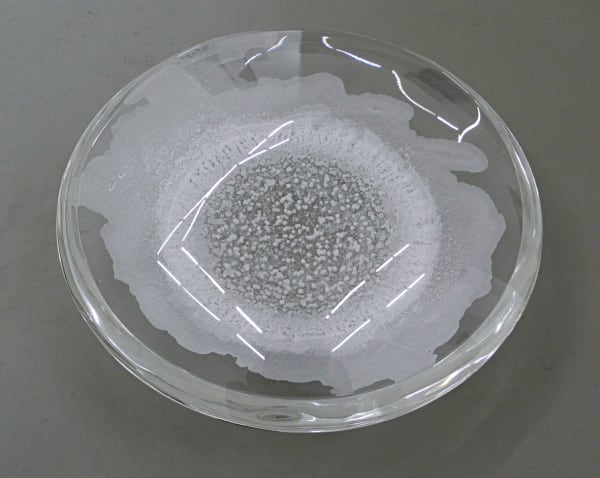RAGNA RÓBERTSDÓTTIR : Seascapes
“The day will end, and Phoebus will bathe his weary horses in the deep, before my words can do justice to all that has been translated into new forms.”
- Ovid’s Metamorphoses: Bk XV:418-452, Pythagoras’s Teachings: Transfers of Power
The continual undercurrent of change and transformation that surrounds us is the main subject of Ragna Róbertsdóttir’s exhibition. The material world is either becoming or decaying, constantly reforming into something utterly different, through processes of varying duration. As an artist Róbertsdóttir directs our attention to these natural evolutions, but she also intervenes, becoming a participant by transforming raw material through her work. Like an alchemist, the artist gathers materials from nature and transforms them, so that they take on new value as works of art, conforming to a different set of rules within culture.
In interpreting Róbertsdóttirs work, time and place are truly relative concepts. A sense of place has always played an important role in her art, because each time she plays with connections between the exhibition space and the natural sites where she discovers the materials that she works with. Concealed between the two is an ambiguous location within the artist’s mind (as suggested by the title of this series, Mindscape. Time is another vital element – both the time that is involved in the natural creation of the raw material itself, and the time that the artist spends in becoming familiar with the material, experimenting with it and, finally, making it into a piece of art. Even then the process is not yet complete, as is apparent in Ragna’s silver works, which continue to change and tarnish as the precious metal reacts with elements in the atmosphere.
Róbertsdóttir ́s latest works are characterised by ambiguities of time and place. They relate to the sea, and more specifically to the Arnarfjörður fjord, where the artist has recided during the summers for some years. She has been avidly collecting shells there, drawn by the cycle that occurs as shellfish grow, develop their own unique form and then decay into the homogeneity of the gravel and yellow sands that are characteristic of the fjord ́s beaches. Róbertsdóttir ́s collection and classification of shells has taken place over many years, and their display here has been executed with patience and meticulous attention – all for the brief moment of the exhibition.
Furthermore, Róbertsdóttir is working with sea salt, with its property of crystallizing through evaporation of water, creating unpredictable forms that grow outwards from the centre. They remind us of crocheted lace and other similar kinds of handicraft, and the comparison is not without relevance. Róbertsdóttir’s sense of material is rooted in a background in textiles, affording her work a uniqueness that is different than if it were in other mediums. She has developed a craft, and a working process, that are shaped by the qualities of the material, and, furthermore, which bring those qualities to the fore. Rather than spinning or weaving thread, she finds analogous methods with which to entwine seperate elements, creating a greater whole. Róbertsdóttir’s works also relate closely to the way in which textiles are used in the context of architectural environments; she has moulded ‘tapesteries’ out of lava and clay, arranged strips of purpose-cut rock into ‘runner rugs’ and ‘carpeted’ whole galleries with pumice.
In this exhibition Róbertsdóttir’s work, and its display, reflect the strict cubic architecture of the i8 gallery. She is considerate of scale, proportion and light, allowing the work to express itself fully in the context of the space and its particular characteristics. The artist’s references to the environment also reach out beyond the gallery walls, alluding, in her wall works, to Icelandic architectural history and the traditional craft of applying ground crystals and shells as a facade of stone buildings. As before, Róbertsdóttir weaves together the inspirations of the man- made environment and history with her passion for nature and landscape. She plays with the fluctuating boundaries that either seperate or unite nature and culture, where different processes within the cycle of nature and the progress of history repeatedly offer us new images.
-Markús Þór Andrésson

















